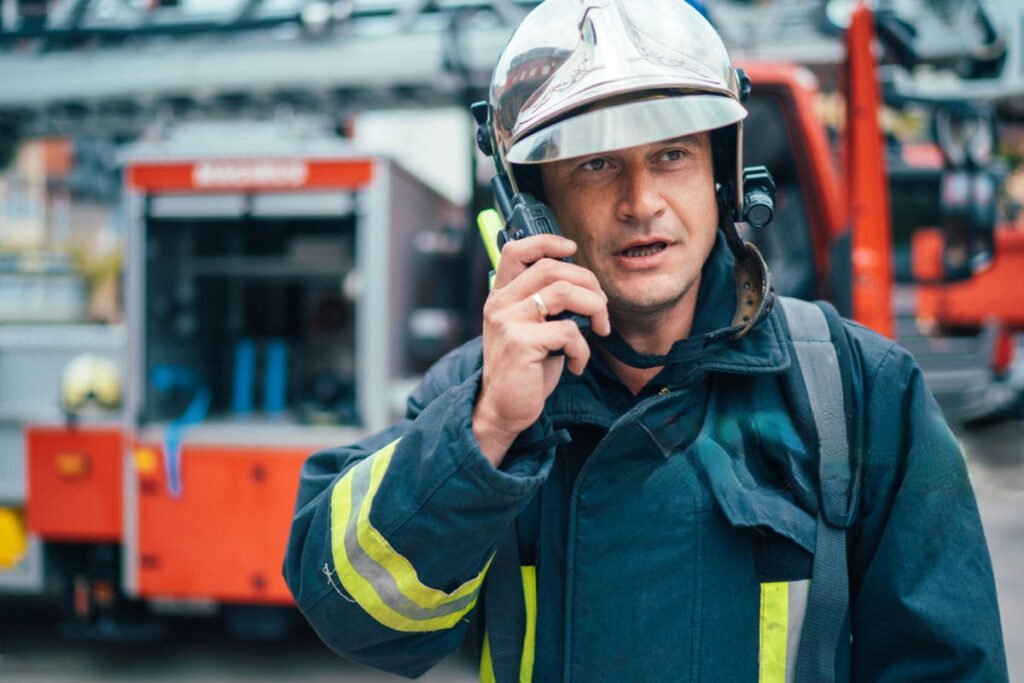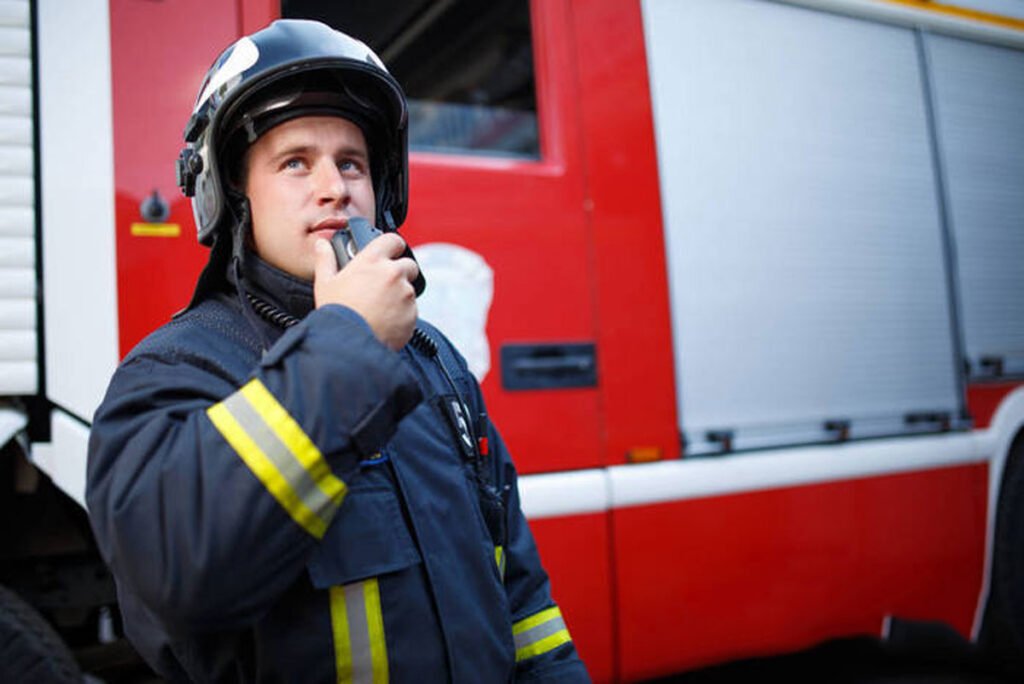Two-Way Radio Solutions for Firefighter & EMS

Two-Way Radio Solutions for Firefighter & EMS: Enhancing Mission-Critical Communications
In high-stakes environments where seconds separate life from death, reliable communication isn’t just convenient—it’s lifesaving. For firefighters and EMS teams, traditional consumer-grade radios fall catastrophically short. With the global Land Mobile Radio (LMR) market projected to grow from $24.84 billion in 2024 to $70.53 billion by 2034 (11% CAGR), advancements in rugged, intelligent two-way radios are transforming emergency response. Here’s how next-gen solutions solve real-world problems.
The Unique Communication Challenges in Fire & EMS
- Signal Blockages: Concrete buildings, underground tunnels, and dense industrial sites notoriously disrupt radio waves. VHF signals (30–300 MHz), common in older systems, struggle to penetrate walls, while UHF (300 MHz–3 GHz) performs better indoors.
- Extreme Environments: Temperatures exceeding 500°F (260°C), submersion in water, and impact damage can cripple standard devices.
- Voice Clarity Issues: Background noise—sirens, breathing apparatus, collapsing structures—often drowns out critical audio.
- System Interoperability: During multi-agency responses, incompatible networks (e.g., police vs. fire bands) delay coordination.
Cutting-Edge Features for Uncompromising Reliability
1. Ruggedized Hardware for Survival in Extremes
Modern radios like the Motorola APX 8000XE and APX XE500 RSM shoulder mic are engineered to military standards. Key innovations include:
- Submersion resistance up to 2 meters for 4 hours.
- 5-minute survival in 500°F (260°C) heat.
- Enhanced drop/impact protection (exceeding IP67 ratings).
- Glove-compatible controls with oversized buttons and tactile knobs.
2. Intelligent Audio & Noise Suppression
Background noise reduction isn’t a luxury—it’s a necessity. Solutions like ZhongChuang’s handheld radios integrate AI-driven noise cancellation, filtering out low-frequency rumble (e.g., idling engines) and high-decibel ambient noise. The APX XE500 RSM uses five strategically placed microphones and beamforming to isolate human speech even in chaotic scenes.
3. Multi-Band Operation & Interoperability
Radios like the APX 8000XE support VHF, UHF, and 700/800 MHz bands—enabling communication across agencies using different frequencies. Integration with Project 25 (P25) digital standards ensures encryption, GPS tracking, and seamless handoffs between networks. Tennessee’s statewide TACN system, adopted by agencies like Morristown Utilities, exemplifies this multi-agency interoperability during disasters.
4. Redundancy & Backup Systems
When cellular networks fail, LMR systems provide a fallback. Innovations include:
- Dual capabilities: Using shoulder-mics like the multifunctional firefighting shoulder mic that plug into building fire alarm ports (via a dedicated interface) to establish hardline connections with command centers when wireless fails.
- Mesh Networking: Ad-hoc systems (e.g., WANET technology) let radios self-organize into networks without infrastructure—critical in collapses or remote areas.

The Rise of Full-Duplex & Hands-Free Operation
Legacy “push-to-talk” (PTT) half-duplex systems force responders to compete for airtime. New full-duplex solutions—like Siwei Wireless’s concurrent MESH modules—enable natural, phone-style conversation:
- Multiple speakers can talk/listen simultaneously.
- PTT-free operation frees hands for patient care or equipment handling.
EMS teams in China report 30% faster coordination using full-duplex terminals in underground rescues, paired with bone-conduction headsets for clear audio amid ambient chaos.
Case Study: Real-World Implementation
After Hurricane Helene disrupted communications in 2024, Morristown Utilities (Tennessee) upgraded to TACN’s statewide LMR system. The results:
- Redundant base stations and mobile antennas maintained connectivity during primary system failures.
- Seamless cross-agency coordination with fire, EMS, and state responders.
Future-Proofing: Trends to Watch
- Hybrid LTE-LMR Radios: Combining LMR reliability with broadband data for video telemetry and IoT integration.
- Satellite-Linked Comms: Ensuring coverage in wildfires or rural zones beyond terrestrial networks.
- AI Dispatch Systems: Automating resource allocation using voice recognition and predictive analytics.
Choosing Your Solution: Key Considerations
- Frequency Bands: Prioritize UHF or 700/800 MHz for indoor penetration.
- Accessories: Use helical or whip antennas (not stubbies) for maximum VHF range; heat-resistant shoulder mics for fire scenes.
- Standards Compliance: Ensure P25 Phase 2 or TETRA support for encryption and interoperability.
Reliable communication is the nervous system of emergency response. By investing in purpose-built two-way radios—combining ruggedness, intelligent audio, and future-ready tech—fire and EMS teams don’t just carry tools: they carry lifelines.
Here’s a powerful, action-oriented CTA designed for the fire/EMS audience, emphasizing urgency and tailored solutions:
Ready to Equip Your Team with Lifesaving Reliability?
Don’t gamble with communications in life-or-death scenarios. Get a free, no-obligation quote on certified rugged radios and tailored interoperability solutions for your agency.
👉 Request Your Customized Quote Now
(Submit form below – takes 90 seconds)
Why act today?
• Expert consultation: Our engineers specialize in fire/EMS comms challenges.
• Budget planning: Lock in pricing for grant-funded projects.
• Priority deployment: Secure inventory for high-demand gear.
